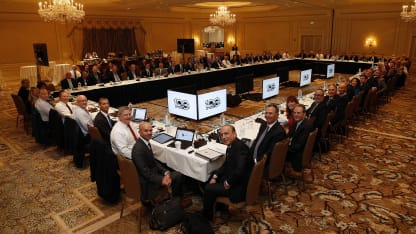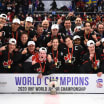If the NHLPA doesn't trigger any growth factor, the cap is projected to rise to $78 million. A 2.5 percent inflator leads to a projected cap of $80 million and a 5 percent inflator results in a projected $82 million cap. The growth factor can be anywhere from 0-5 percent. For 2017-18, a growth factor of 1.6 percent raised the salary cap from $73 to $75 million.
An $82 million cap would be the largest season-to-season rise in the salary cap since it was instituted for the 2005-06 season. The cap rose $6.4 million from 2007-08 to the 2008-09 season ($50.3 million to $56.7 million).
Commissioner Bettman said his preference is a smaller-scale rise in the salary cap because of the impact it has on the escrow taken out of players' contracts.
Escrow ensures the owners and players receive an equal split of hockey-related revenues, per the terms of the collective bargaining agreement. The League is trying to keep the escrow in the single digits.
"We're projecting from our standpoint that the final escrow when it's settled out and we disperse it will be a single-digit escrow from player salaries for last season," Commissioner Bettman said. "For this season, if we stay on the low end [of the cap], we can keep it single digits as well. But again, the Players' Association may have a contrary view and that's probably not a discussion that we'll wind up having until June."


















